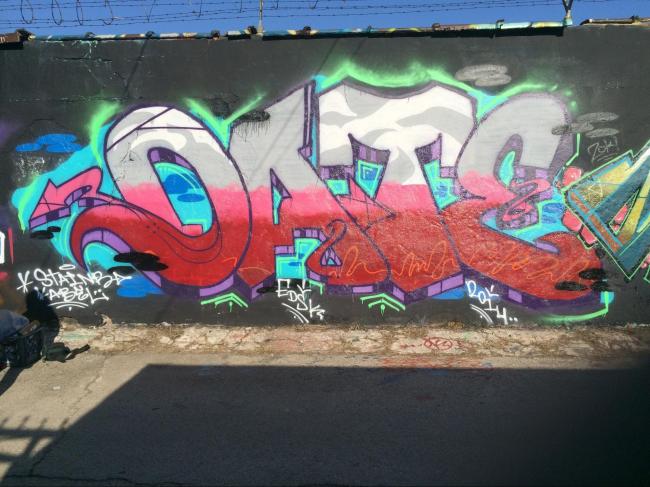The City Council finds and determines that the increase of graffiti on both public and private buildings, structures, and in other places, creates a condition of blight within the City which can result in the deterioration of property values, business opportunities, and enjoyment of life for persons using adjacent and surrounding properties. The Council further finds and determines that graffiti is inconsistent with the City’s property maintenance goals, crime prevention programs and aesthetic standards, and, unless graffiti is quickly removed from public and private properties, other properties soon become the targets of graffiti. Source.
The City Council hereby declares that graffiti is a public nuisance and is subject to punishment and abatement as prescribed in this Code.
It is unlawful for any person to deface public or private property with graffiti.
It is unlawful for any person to assist, aid, abet, allow, permit, or encourage another to violate the provisions of this article, by words, overt act, failure to act, or by lack of supervision and control over minors.
During the time when any public facility is closed, no person shall have in his or her possession any graffiti materials while in or upon such public facility.
In addition to any other penalties and as restitution for a violation of any section of this article, a violator shall pay for the costs of repairing any damages to property caused by that violator’s unlawful conduct. When the violator is a person under eighteen (18) years of age, any parent, guardian, or other person having legal custody of the violator shall be responsible to pay for damages caused by the violator or abatement of the nuisance which is the result of the violator’s act. Source.
The owner shall replace rotting or missing fence panels or walls and all graffiti shall be removed. Such maintenance shall be conducted within one month of the occurrence causing the repair.
In the event the owner fails to install or maintain a required landscaped or screening area, the City shall notify the owner of action necessary to meet the requirements of this article and a date when such action should be completed. If the owner has not complied by said date, the City shall have the right to go onto said property and maintain said buffer. The cost for such maintenance or installation shall be at the owners expense. If the owner fails to pay, the City Attorney collect costs plus attorney fees to pursue action against the owner. Source.
No person shall willfully or wantonly damage, mutilate or deface any exterior surface of any structure or building on any private or public property by placing thereon any marking, carving or graffiti.
It shall be the responsibility of the owner to restore said surface to an approved state of maintenance and repair.
Sources:







